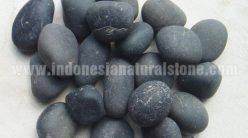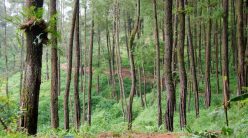Florida Today
BY MARIA SONNENBERG
Nature volunteer makes homes for purple martins
Human parents can learn a tip or two from purple martins.
The little insect eaters are good providers, zealously guarding their brood on nests high above the ground.
When the fledglings reach maturity, however, the martins enforce a tough-love approach, relentlessly pushing their heirs away and into a life of their own.
The youngsters must set up their own digs, making for a purple martin housing market as hot as Brevard’s human equivalent.
Merritt Island National Wildlife Refuge volunteer and nature tour leader Chuck Blakey hopes more homeowners will join him in becoming landlords for these elegant members of the swallow family.
Blakey became interested in the gregarious little birds seven years ago and since has gained such expertise into their housing requirements that when Animal Planet network was looking for a purple martin guru to appear on its “Backyard Habitat” program, Blakey’s name popped up.
“Backyard Habitat” demonstrates how anyone can provide a natural living space for animals regardless of where they live.
For the television show, Blakey used his experience as a purple martin housing manager to help a Mims family create inviting nesting sites for the birds.
Blakey is landlord to 32 nests that produce an average of 80 to 100 fledglings a year. And his bird condos look nothing like the rows of avian condos that most people associate with purple martins.
Many of those cute little houses high above the ground are no good, he said. And, “a lot of those little apartments are too small,” Blakey said.
Go with gourds instead, he suggests.
“The birds love them,” Blakey said.
Gourds, natural or plastic, hung from a 20-foot telescoping pole are better for the birds in more than one way.
“It makes it more difficult for the owls to predate on the babies,” he said.
The relative privacy of the gourds also keeps tabs on mite infestation, another significant source of fledgling mortality.
Blakey’s gourds are indeed popular. The “scouts” — actually experienced parents that return to established nests — are already in his Titusville backyard this year, signaling the start of another nesting season.
Blakey has purposefully kept the nests in his property at 32, a number he feels is manageable for him.
“If landlording becomes work, you have too many nests,” he said.
He keeps the gourds at least 40 feet from human dwellings or any big trees to discourage most predators.
Rat snakes are kept at bay by predator guards.
Every five days during the season, Blakey lowers the poles that hold six gourds each and inspects nests for dampness and mites, counting the number of eggs and chicks and recording the data for reporting to the Purple Martin Conservation Association’s Project Martin Watch.
When he finds excessive mites, he will carefully remove the chicks and place them in five-gallon plastic bucket using surgical gloves, toss out the infected nesting material, clean the gourd inside and out with rubbing alcohol and wipe the inside thoroughly with paper towels before rebuilding the nest and replacing the chicks.
The parent birds readily accept the clean nests.
According to Blakey, the cost and effort is minimal and well worth the opportunity to make a home for the little birds before they migrate to South America later in the year.
“We also set aside time for sitting in our screen room and watching for their return from foraging each afternoon and listening to their social hour each morning,” he said. “When they leave in the summer, we really miss them.”





